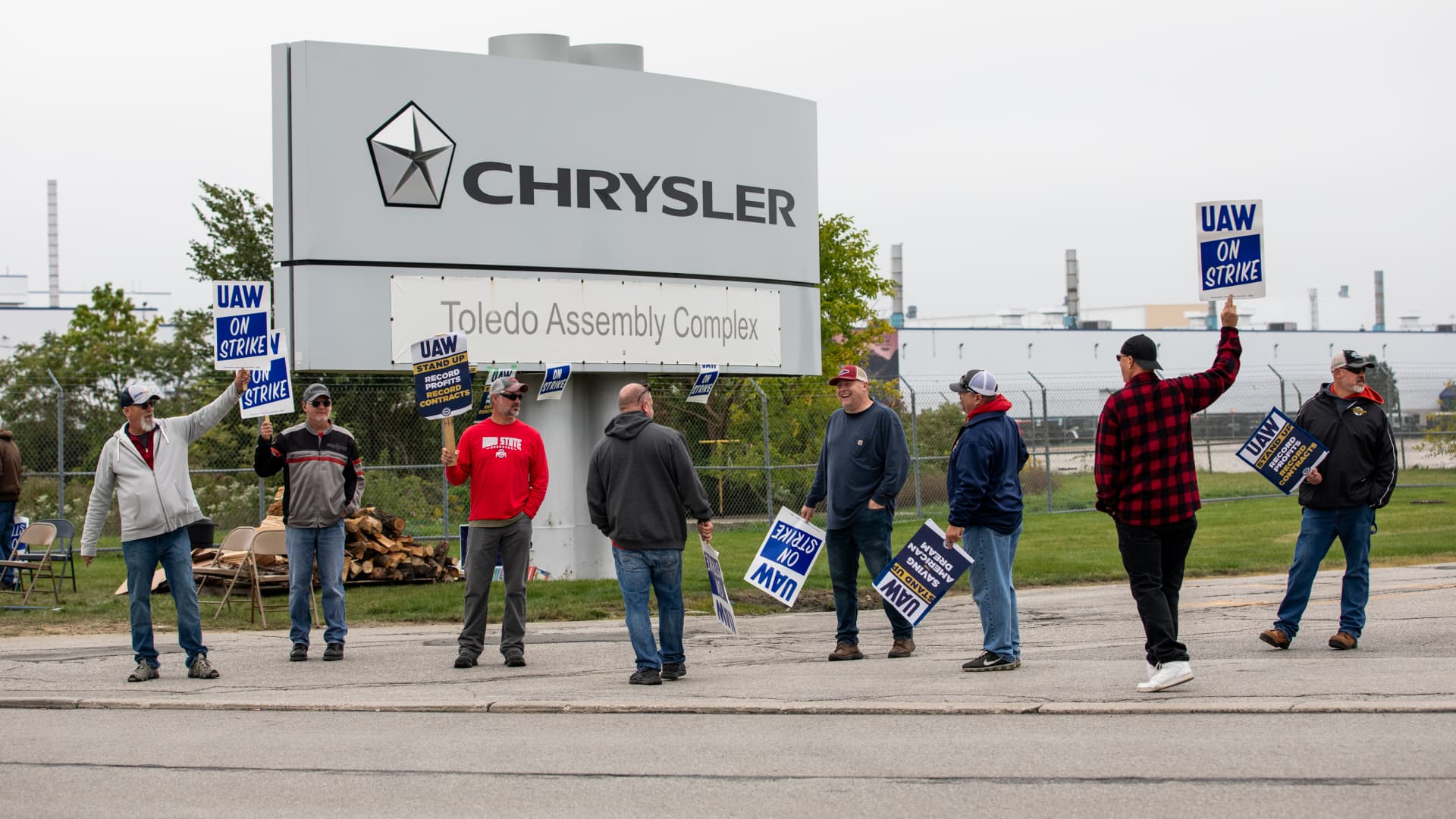Members of the United Auto Workers union hold a practice picket in front of Stellantis headquarters in Auburn Hills, Michigan, on Sept. 20, 2023.
Bill Pugliano | Getty Images
Regardless of the outcome, the United Auto Workers strike threatens to cause already-high car prices to escalate.
After the Big Three automakers — Ford, GM and Stellantis — failed to reach a deal on a new contract with the union, UAW-represented workers walked out of several assembly plants in Missouri, Michigan and Ohio, and warned it will strike additional plants at some, if not all, of the automakers at noon Friday.
More from Personal Finance:
Buy holiday airfare in October
Truck buyers are driving up car payment costs
Why it’s hard to find a cheap new car these days
Up until this point, the strikes targeted only certain models, such as Ford’s midsize Ranger and the Jeep Gladiator, which are also not considered the best-selling vehicles, according to Ivan Drury, Edmunds’ director of insights.
“It’s a ‘chess not checkers’ mentality,” he said.
However, if the strike expands, or alternatively, if the striking autoworkers’ demands are met for a 40% pay raise along with other benefits, that could put pressure on automakers, dealers and, ultimately, car shoppers.
“It’s kind of a toss-up what’s going to happen,” Drury said.
Either way, consumers will pay more down the road, he added. “Inevitably yes, no matter what.”
Car shoppers won’t see an immediate effect
For now, anyone shopping for a car won’t see an immediate effect from the strike, Drury said.
“There’s enough inventory on dealers’ lots,” he said.
Heading into the fall, vehicle supply had nearly stabilized, according to Cox Automotive, a source of auto industry information, although it is still low by historical standards.

The three automakers grew their inventories in August in anticipation of a potential standoff. They have about 50 to 60 days’ worth of inventory on hand, Cox Automotive said, up roughly 80% from a year ago.
This buffer may prevent dealers from feeling a significant effect, at least initially, according to separate data from Lotlinx, a dealership inventory management firm.
‘Dealers could see shortages within weeks’
In the longer term, “work stoppages ultimately lead to fewer vehicles built and lower inventory,” Cox Automotive Chief Economist Jonathan Smoke wrote in a blog post last week.
Discounts may decline as a result, depending on the model, Smoke noted.
“Ford only has 18 days’ supply of the popular Maverick pickup and 47 days of Broncos. Jeep only has 62 days of Grand Cherokees, and Chevy dealers are likely worried about their 28 days of Tahoes,” he wrote.
“If production of one of those products is disrupted, dealers could see shortages within weeks,” Smoke added.
With that in mind, consumers in the market for a car will likely find better deals now than later this fall.
“If you are thinking of making a purchase in October or November, you might as well do it now,” Drury said. With the added pressure from the strike, dealers are likely to pull back on incentives, including discounts on financing, he also noted.
“You are not going to find better deals later,” Drury explained.
Used car prices may be next to rise
Instead of getting a new car, buyers on a budget may find more value in purchasing a used car, experts often say. However, prices of wholesale used vehicles may have bottomed for the year, research shows.
“With potential new car production slowing, used car values have nowhere to go but up,” Drury said.

